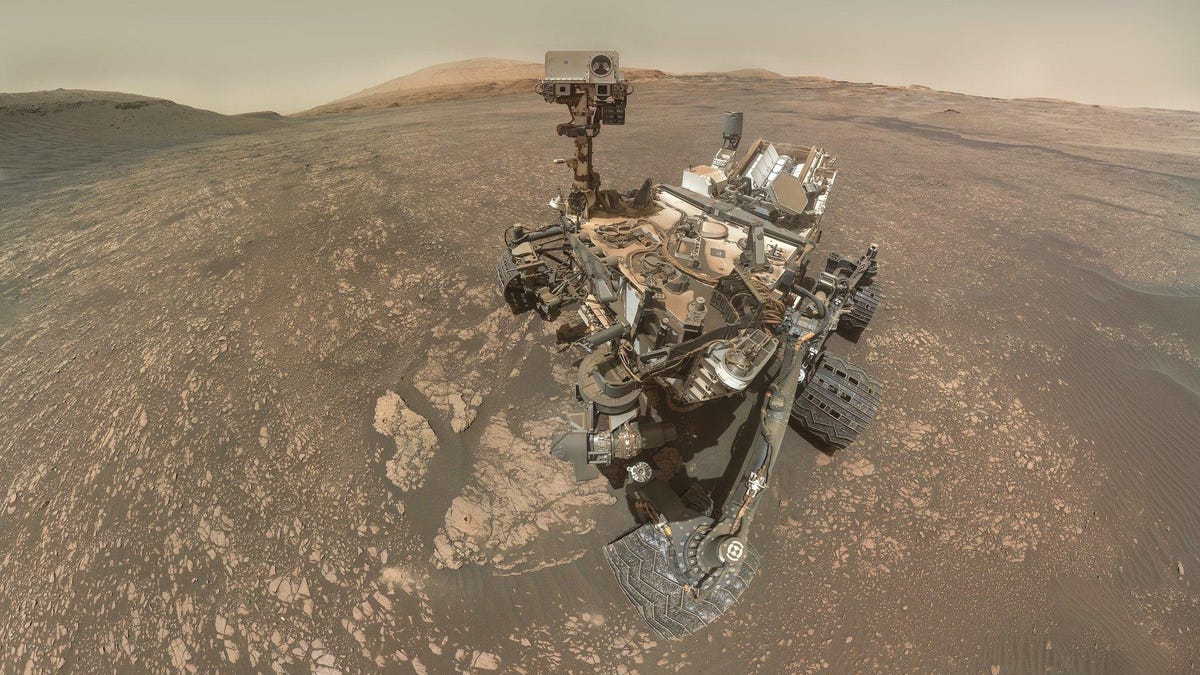NASA's Curiosity rover makes a baffling oxygen discovery on Mars
Seasonal variations in Martian oxygen levels are puzzling NASA's planetary scientists.

The Curiosity rover collected the images for this selfie on May 13, 2019, which corresponds to Sol 2405 on Mars.
Curiosity, NASA's SUV-sized roaming laboratory working on Mars, has been at the center of a number of Martian mysteries during its seven-year stint on the red planet. In June, its Sample Analysis at Mars instrument detected a surprising spike in methane gas that puzzled NASA scientists. The mystery of Mars methane has been partly resolved, but now Curiosity has uncovered another baffling Martian puzzle: Oxygen is acting strangely and scientists don't really understand why.
New research, published in the Journal of Geophysical Research: Planets on Tuesday, details an almost 6-year-long air-sampling project conducted in Gale Crater, where Curiosity has been spending most of its time. Using the SAM instrument, the portable lab that detected the methane spike, NASA scientists found "significant seasonal and year-to-year variability" in the oxygen content. This is weird.
The SAM instrument is able to analyze what molecules make up the Martian atmosphere. The atmosphere on the red planet consists mostly of carbon dioxide, but during winter, CO2 freezes over the poles, which lowers air pressure across the planet. During the thaw, in summer and spring, the CO2 raises air pressure. Researchers see molecules like nitrogen and argon change in concentration according to the season, too.
But oxygen acted differently. It only makes up a tiny amount of the Martian atmosphere (around 0.16%), but it doesn't follow the expected rises and falls. During spring and summer, the concentration of oxygen was much higher than expected. In fall, it dropped back to predicted levels. Then in winter, it fell below predicted levels. What's going on here?
"The fact that the oxygen behavior isn't perfectly repeatable every season makes us think that it's not an issue that has to do with atmospheric dynamics," Melissa Trainer, a planetary scientists at NASA's Goddard Space Flight Center and first author on the new study, said in a press release. "It has to be some chemical source and sink that we can't yet account for."
The research team is struggling to explain this, just like other NASA scientists are struggling to explain the unusual methane spikes seen earlier in the year. The data suggests a correlation between methane and oxygen fluctuations throughout the year. Could there be a link between the two? It's an interesting prospect, but one that scientists are yet to fully understand.
Of course, the question that always comes up with these weird Mars discoveries: Does this mean there's life buried somewhere in the Martian dirt? Probably not -- and it's impossible for Curiosity to know, because it doesn't have the instrumentation on board to carry out experiments that would test for extraterrestrials. However, when NASA's as-yet-unnamed Mars 2020 rover reaches its destination in 2021, a clearer understanding of life on Mars should be forthcoming.

